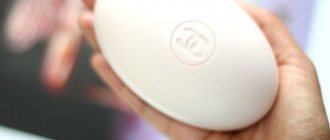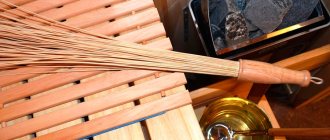Bathhouse owners often have disputes about the need for a special product intended exclusively for washing bathhouses and saunas. Most believe that the usual universal methods of home care will do, but some believe that the presence of a specialized product is mandatory.
In Russia, baths, as a rule, are of a slightly different nature than in other countries. We have a lot of them, and in villages this is generally a common phenomenon, since next to every residential house there is an equally beautiful bathhouse. However, in our case, these establishments are intended for individual use, maximum for a family, but in other countries bathhouses are public institutions. Therefore, the availability of a safe bath detergent is quite in demand among the population.
What surfaces is the product intended for? Yes, for everyone you can imagine. With its help you can process wooden walls and floors, tiles, glass elements and much more. From this, a wide range of applications can be defined.
What is the difference between a specialized and a conventional product?
It’s worth starting with the environment and atmosphere that reigns inside steam rooms, baths, and saunas. Their main purpose is to steam and wash. Therefore, water and high temperature are constant companions of such premises. The temperature ranges from 60 to 100 degrees depending on preference manually: by pouring cold water on the stones (to cool the heat), or by throwing firewood into the stove/switching the artificial apparatus to higher settings (to add heat).
Constant temperature changes, high levels of humidity, and the use of wood materials inherent in saunas have determined the need to use a safe detergent for baths.
Sanitary rules
In order to prevent fungal diseases, a set of sanitary, hygienic and disinfection measures are carried out in baths, saunas, and sanitary checkpoints.
Bathrooms and showers must be equipped with hooks and shelves for clothes and bath accessories.
The staff room is equipped with individual lockers for separate storage of personal clothing and workwear of bathhouse workers.
Baths, saunas, sanitary inspection rooms must be provided with a sufficient number of labeled cleaning equipment, separate for all categories of premises. Cleaning equipment must be used in strict accordance with the labeling and stored in a separate room or cabinets.
Rubber hoses should be used for cleaning soap and steam rooms. Every day, after the closure of the bathhouse, sauna, sanitary inspection room, all premises are thoroughly cleaned using detergents and disinfectants that provide a fungicidal effect. During the working day, in breaks between sessions (at least 30 minutes), the bathhouse premises are cleaned using detergents and disinfectants (paying special attention to the floor, benches, basins).
In bathhouses, saunas, sanitary inspection rooms, once a week (it is necessary to have a schedule for closing institutions on a sanitary day), the schedule is agreed upon and approved by the head of the organization. On sanitary days, visitors are not allowed. On this day, a general cleaning of all bathhouse premises is carried out (including the treatment of walls, floors and equipment) using detergents and disinfectants.
Workers of baths, saunas, and sanitary inspection rooms must be provided with protective clothing in an amount that ensures that they are replaced at least once a week and when soiled. Cleaners must also have gloves and aprons.
In baths, for one place in the soap bar there should be two basins (for the body and legs), differing in color or shape, which after use are treated with detergents and disinfectants. Showers must be equipped with smooth rubber or plastic mats (not ribbed). It is possible to use painted wooden gratings.
To prevent foot mycoses, when visiting a bathhouse, sauna, or shower, you should use closed rubber slippers. The use of impersonal shoes is unacceptable. After visiting the bathhouse, the skin of the feet can be treated with a skin antiseptic intended for this purpose and approved for use in the prescribed manner.
Review of wood as the main material for building a bathhouse
Why do people use mostly wood when building steam rooms? Why is she so good? And are there any disadvantages to this material? Let's find out further. Let's start with the positive ratings.
First of all, it is worth emphasizing the 100% environmental friendliness and naturalness of the selected material. Currently, it is as in demand as it was before. The properties of wood determine its purpose: in winter it allows you to retain maximum warm air, and in summer, on the contrary, it keeps the room cool. And wood significantly makes it easier to regulate different temperatures - and in a bathhouse this is a huge plus.
But any phenomenon must be considered from two sides in order to have a clear and complete understanding. Negative trends include such qualities of wooden materials as the fastest and simplest degree of flammability, as well as the accumulation of moisture in their pores, which subsequently leads to swelling and a change in the level of hardness, that is, the loss of their original characteristics. Special care is required for wood components, including the use of a safe sauna detergent. These premises are also susceptible to the harmful effects of all kinds of insects, the proximity of which will not be pleasant for a person. There are frequent cases of fungal formations on walls and ceilings in buildings where there is a high level of humidity. Thus, it is once again worth emphasizing the proper care of such organic material as wood, which allows you to improve the original properties and prevent negative consequences that appear during operation.
Disinfection of home furniture and air
For antiseptic care of furniture, gentle compositions with caring components are used: polishes, oils, ammonia, etc. It is safe to carry out antiseptic cleaning for most surfaces with such means as:
- Proklin Oldey;
- Remedin spray;
- Eco Breeze (napkins).
To safely disinfect the air at home, use a 70% ethyl alcohol solution. Disinfection is carried out by spraying from a spray bottle; all surfaces in the apartment are additionally treated. It's good if you have an air purifier at home. It serves as additional protection. Absolute medical alcohol 96% from a pharmacy cannot be used as an antiseptic. Ethanol works more effectively in combination with water.
A range of specialized sauna care products
It is worth noting that, despite its narrow focus, the market for detergents intended exclusively for treating baths is very rich in various offers.
Let's understand the very essence of such a tool. It is a combination of chemical components that have a cleansing effect on dirty surfaces (wood, tiles, glass, etc.) and disinfectant properties. It is also ensured that there will be no further accumulation of wet vapors on the wood, that is, fibers will not be absorbed or swell. It also contains substances that affect insects that have settled in the bathhouse - they destroy them.
So what safe bath cleaner will be most effective? Conventionally, all the wealth of this market segment can be divided into four groups:
- Organic - fights well with indoor humidity and fumes accumulating on the tree. After their use, a protective layer of a special film is formed on it, which resists the process of wood absorbing wet steam.
- Oil based - no explanation needed here.
- Diluted with water - at the exit from production they are concentrated substances that must be mixed with an aqueous liquid during use. Designed for any type of material from which the surfaces are made. Very effective.
- Mixed - products with high disinfectant properties. It is recommended to use them during the construction of baths and saunas. After all, it is this fact that will help preserve it in the future, reduce the level of flammability of the object and destroy the harmful insects that settle in.
It is worth emphasizing that, although these are chemical compounds, they are characterized by safety for humans and the absence of an irritating odor. These factors make working with drugs much easier.
Disinfection of metal surfaces (including door handles)
To treat metal surfaces, alcohol-containing or oxygen-containing compounds are used. They do not affect the metal surface, but cope well with pathogenic organisms.
The priority is alcohol-containing disinfectants for apartments and houses - sprays or wipes that have high virucidal activity. Here is a list of safe and effective disinfectants for cleaning the house according to user reviews:
- Septolite Tetra;
- Aquaminol spray;
- Lavoll.
How and when to use your chosen bath detergent?
Compliance with the rules that are reflected in the instructions for the purchased product is the key to the highest degree of safety of the work process, as well as the effectiveness of the manipulations performed. It is necessary to follow the technology of surface treatment so that the result is truly what you are counting on at the beginning. Please note that cleaning a sauna is possible at two stages: during construction (preventative purpose), during the period of operation of the sauna (“treatment” of contaminated wood). Prevention is always better than treatment, because it is ahead of the development of problems.
During the construction period, the steam room is completely processed (all logs, boards that are used in construction). This is done for the following purposes: to prevent destruction of the tree cover by insects, fire, and other phenomena. One of the many bonuses of such an event is the extension of service life by seven years. Of course, these figures are arbitrary, but proper care will ensure a long operational period.
An already constructed building is subject to periodic maintenance. The product you purchase will help improve your condition . The market is replete with such goods. But you should choose a safe bath detergent.
Surface treatment technology
When using specialized care products, the effectiveness of the results significantly increases - you can see them literally after the first time. How should the treatment be carried out to give the bathhouse an ideal look? We offer a common algorithm for all tools (depending on the type it will differ slightly, but this is a minor detail).
- Completely clean the surfaces needed for work from all kinds of debris; if it is impossible to remove dirt from the walls with a rag, use sandpaper (with a fine abrasive).
- Soak the sponge, rag or roller you will use in the future in a safe bath detergent You need to apply several layers for a more visible result. Pay special attention to cuts and damage to the integrity of the tree. These are the places where microorganisms accumulate the most.
- The surface is cleaned with only one selected product. Avoid mixing with third party objects. Otherwise, a chemical reaction may occur.
- If traces of insects are detected, use disinfectant cleaning methods.
- Always strictly follow the rules provided by the manufacturer's instructions.
Specialized mixtures do not contain substances such as chlorine. Therefore, avoid connecting it with them. Destruction of microbes and bugs, dirt from all types of surfaces, rather dense deposits on the walls - this product is capable of everything. Thanks to its use, everything in your bathhouse will become clean: windows, doors, ceilings, walls, floors, glass and stone surfaces and more.
Additional advantages include the following: a pleasant aromatic smell that remains after use, it causes irritation and allergies; no marks or cloudy stains from a sponge or brush; removal of fungal and other infections, and lack of toxicity.
The rational way
To carry out high-quality disinfection of a bathhouse, a number of requirements must be met:
- The surface of premises and objects must first be dried and cleaned of sweat and fat deposits. Otherwise, the effectiveness of disinfectants decreases, on the one hand, and a breeding ground for the remains of pathogen colonies is maintained, on the other.
- No amount of disinfection, not even total disinfection, can completely eliminate infectious contamination. It should be assumed that about 10-12% of microorganisms from the original number will remain viable. Another thing is that the specified amount should be much lower than the threshold of the infectious dose.
- The penetrating ability of chemical disinfectants is quite sufficient on flat surfaces with low absorbency. Cracks, crevices, and undercuts can be disinfected with chemical compounds to a lesser extent. The same applies to surfaces with heterogeneous absorbency.
- The most convenient and relatively quick method is chemical disinfection.
Chemical disinfection
The list of chemicals suitable for disinfection in the average bathhouse is quite wide:
- Chlorine-containing substances. Due to the high activity of the active substance, they have a fairly wide spectrum of action and relative versatility. Sodium hypochlorite and chloramine are indispensable for the disinfection of bathrooms, especially in bathhouses with pouring floors and underground water collectors with large stagnant zones;
- Aldehydes. Effective against fungi that cause mold and pathogen spores;
- Phenols. A powerful disinfectant, however, due to the pronounced carcinogenicity of individual compounds, use requires a balanced and reasonable approach;
- Hydrogen peroxide. An accessible and inexpensive product that is effective in combating fungi of various etiologies. Hydrogen peroxide is an active oxidizing agent in which the oxygen molecule plays a key role. Its effect is enhanced when combined with chlorine;
- Alcohol solutions. Alcohol, as a powerful fat solvent, successfully destroys the lipid membrane of viruses. The key disadvantages of this product include the high cost of the base solution and high volatility, as a result of which the time from the moment of applying the solution until the complete evaporation of the active substance is not enough;
- Soap and soda solutions. The most widespread is the 2% concentration, in which 200 grams of soda are dissolved in 10 liters of warm water and thickened with 100 grams of finely shaved soap, which, in addition to a thickener, also acts as a surfactant.
Attention! The problem of penetration of the active substance into hidden spaces can be solved by fumigating the room with high concentration smoke. A sulfur smoke bomb is used as the starting composition. At the same time, do not forget that after treatment, before accepting the procedures, the room must be ventilated for 2-3 days. In addition, sulfur dioxide, which is produced by such bombs, can provoke corrosion of unprotected metal structures.
What should you consider when choosing?
The market is rich in bath products, so there are certain points that you should pay attention to when purchasing a safe bath detergent . This will allow you to choose the best quality model and have a more visible result based on the results of your work. Look who the manufacturer is (foreign countries or Russia). In the first case, the quality will be higher, but, accordingly, the price will be higher. Often it is hyped up only because of a well-known brand. So, maybe it’s worth supporting domestic companies? The cost will be several times lower. Just before doing this, you should turn to the Internet to determine how worthy this product will be. Next you need to decide what kind of mixture you need.
- Target:
— disinfection – antiseptics;
- lowering the level of flammability - fire retardant composition;
– protection from insects and rot – bioprotective agents;
- normal cleaning - detergents.
- Processing type:
- from the street - external treatment;
— from the inside – internal processing.
- Type of material:
- wood;
- glass;
- stone;
- tiles, etc.
Proper care and operation in compliance with the simplest rules will significantly increase the life of the sauna, increasing it by ten years or more.
What will you need to clean the inside of the bathhouse?
Before starting work, it is necessary to equip yourself with all the devices and means for cleaning and washing the working surfaces of the bathhouse. It is not recommended to use chemicals to avoid damage to wooden products.
Tools:
- hard brushes;
- sharpened scraper;
- sandpaper;
- sponges on a long handle;
- washcloths;
- rags;
- lifting device;
- buckets, basins, containers;
- chlorine disinfectant.
Among household products for combating pollution, liquid cleaning solution for stoves, antiseptic, chimney cleaning liquid, and essential oils for impregnation are useful.
In anticipation of the procedure, you should wear a respirator, safety glasses and rubber gloves.
Purchase method
Special-purpose sauna chemicals can be purchased in the traditional way - bought in a store. Or you can order online. There are many sites, one of the directions of which is the sale of safe bath detergent . By choosing the latter method, you will save your time, and perhaps even your money. But in the store you can directly get acquainted with the product, evaluate the integrity of the packaging, you won’t have to wait long for the moment when you can put the purchased product into use, evaluate the effectiveness and result.(










